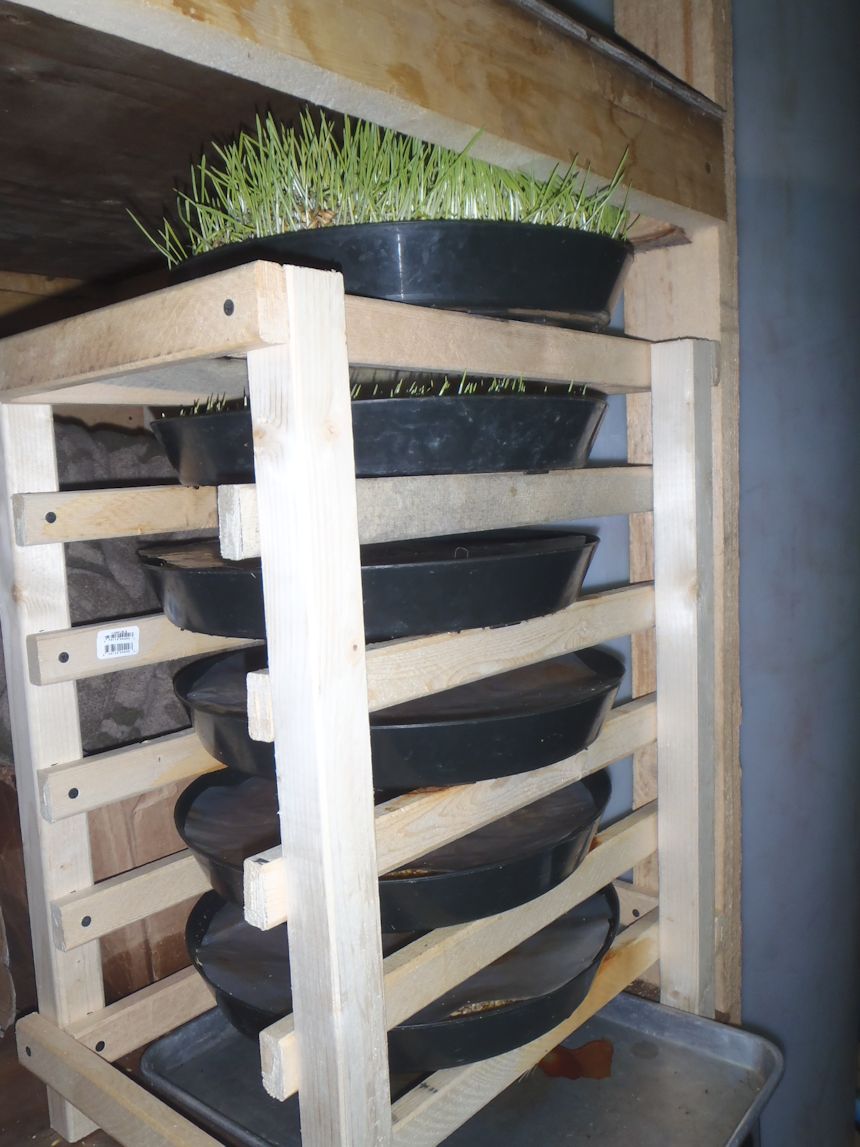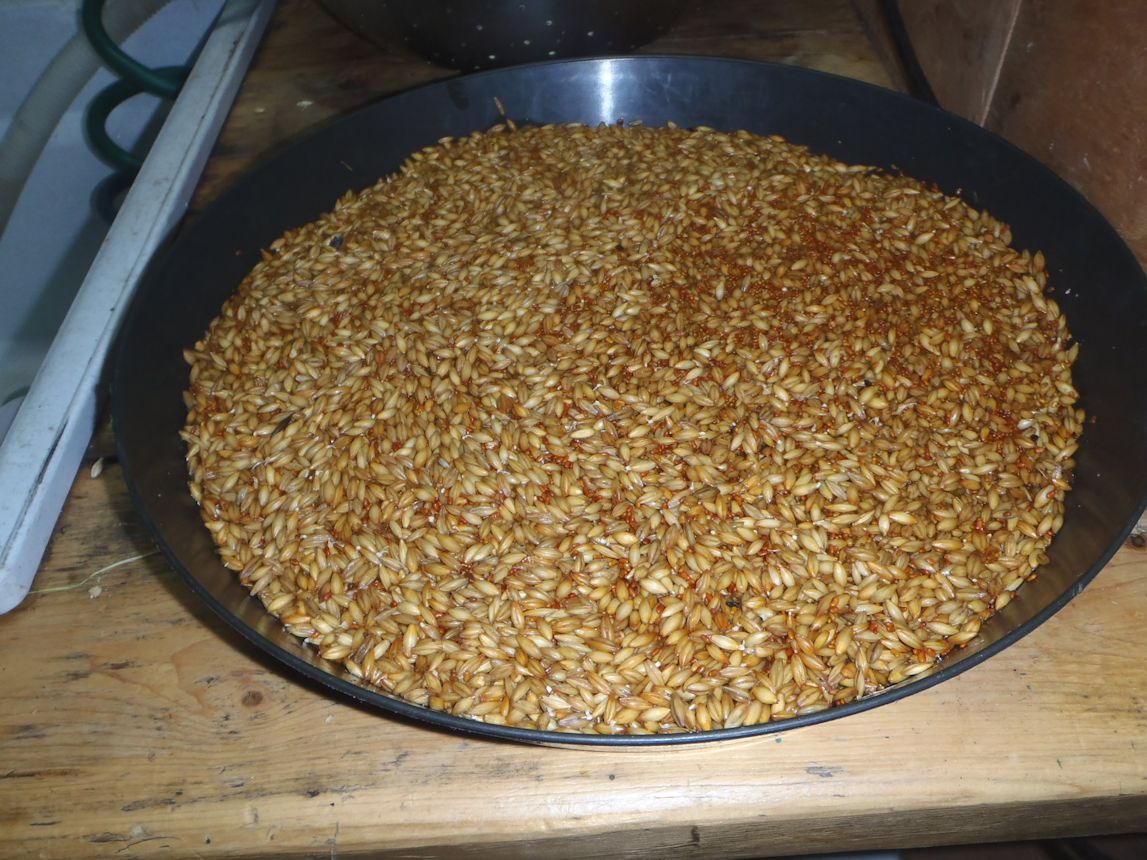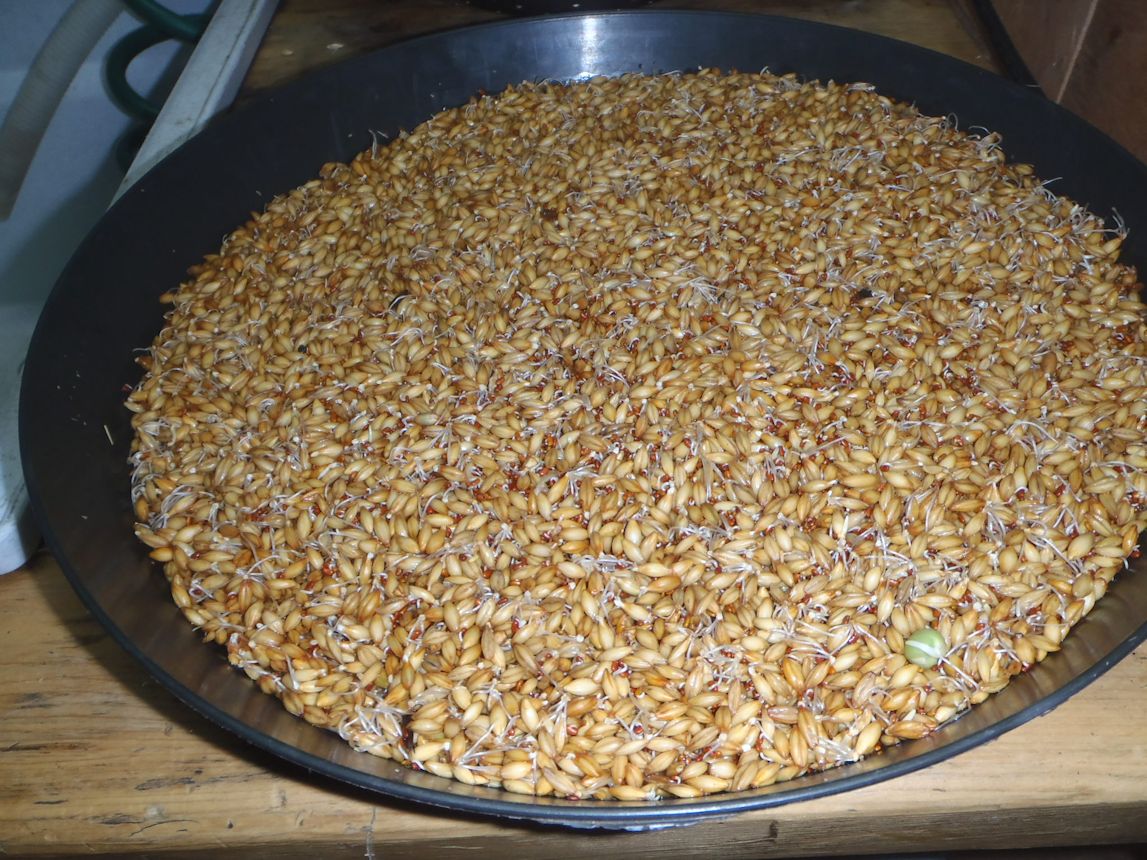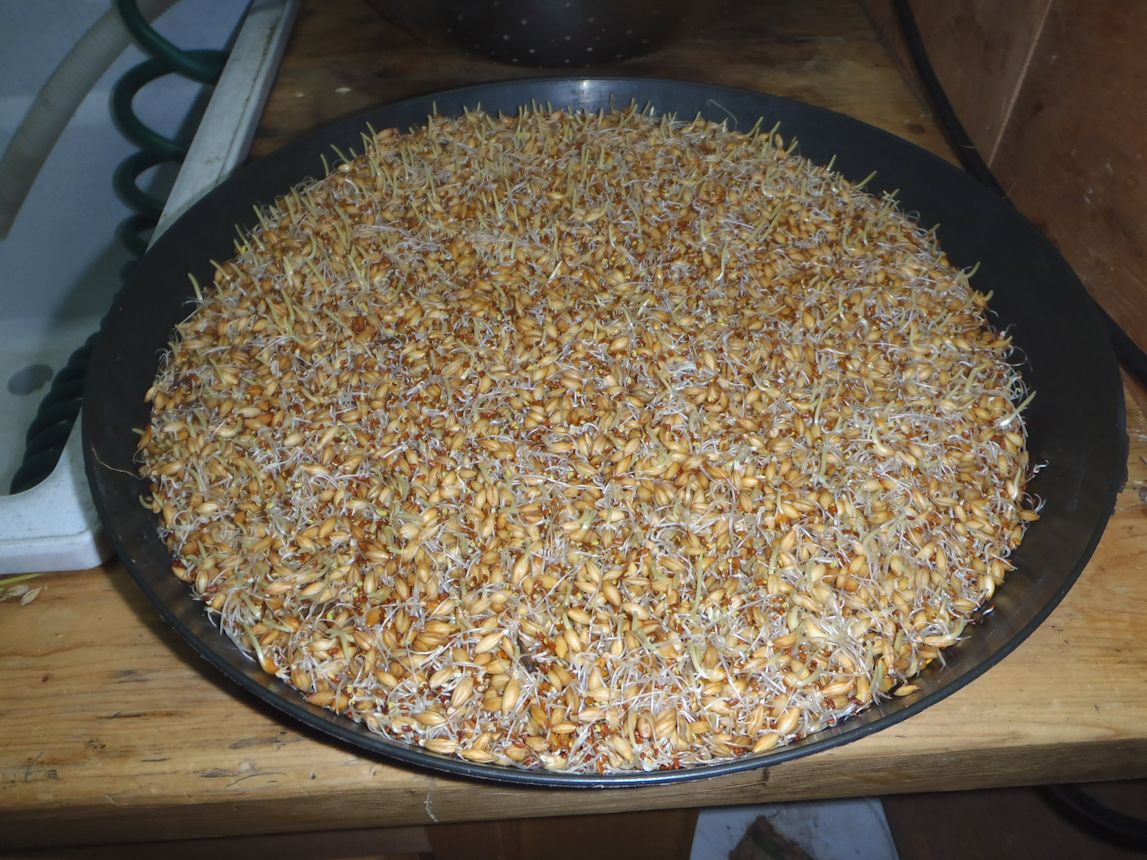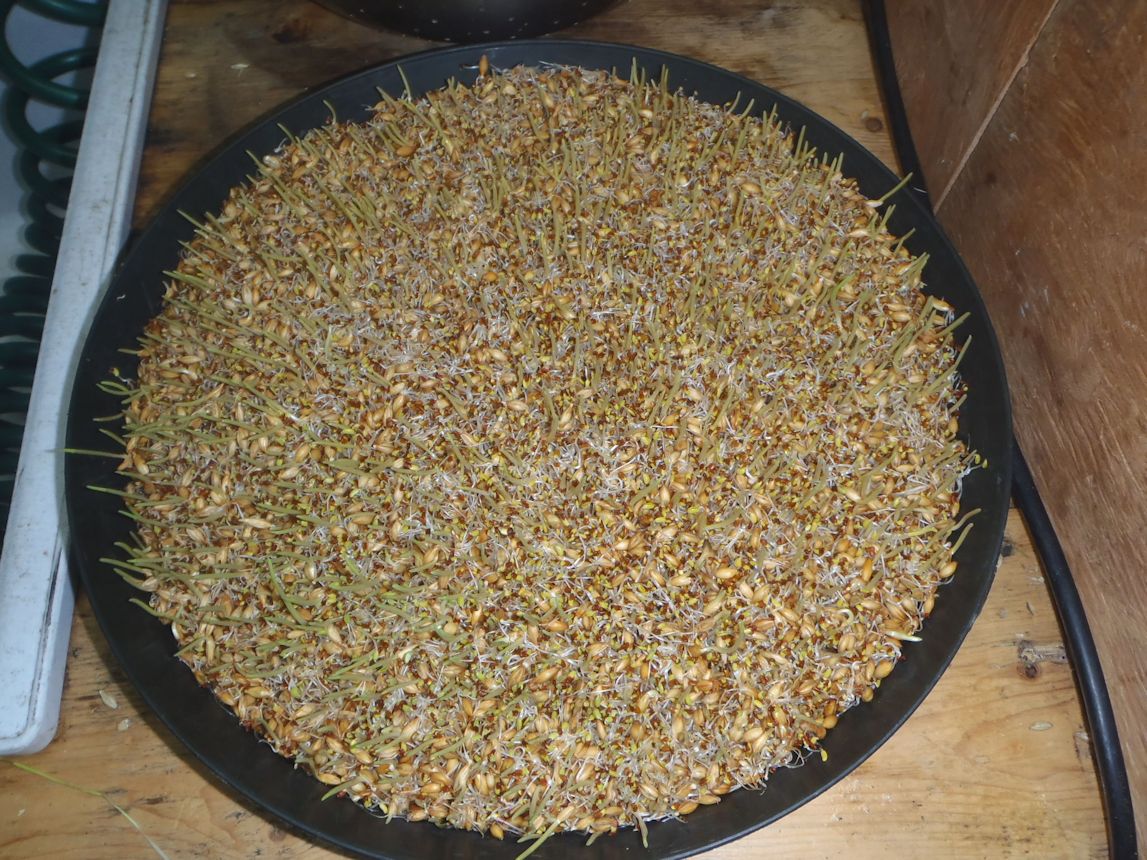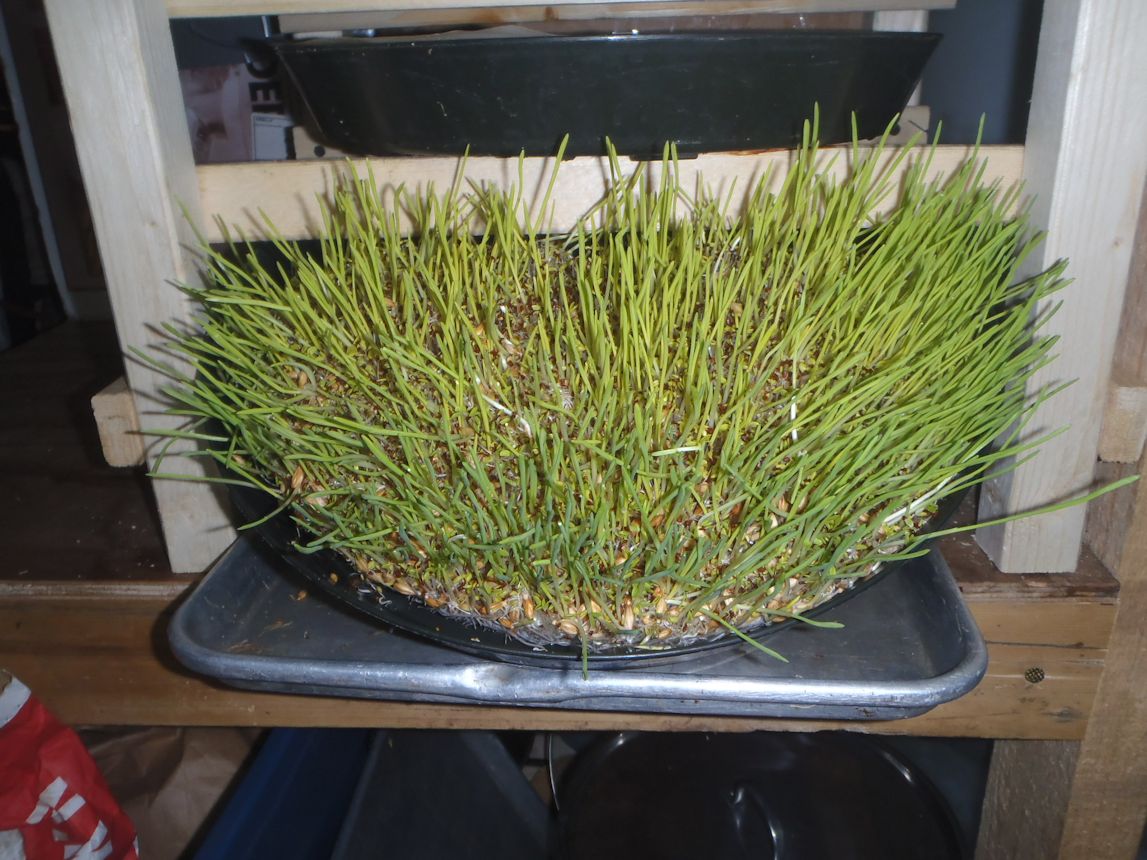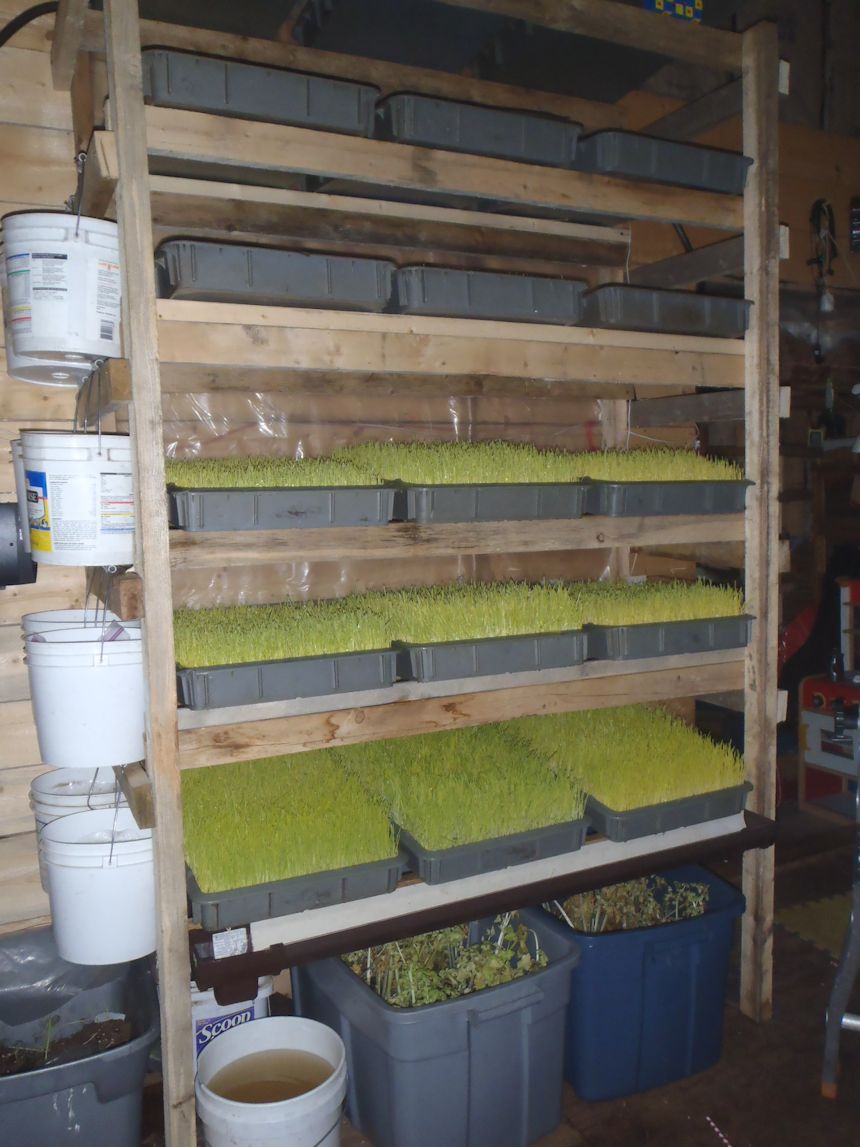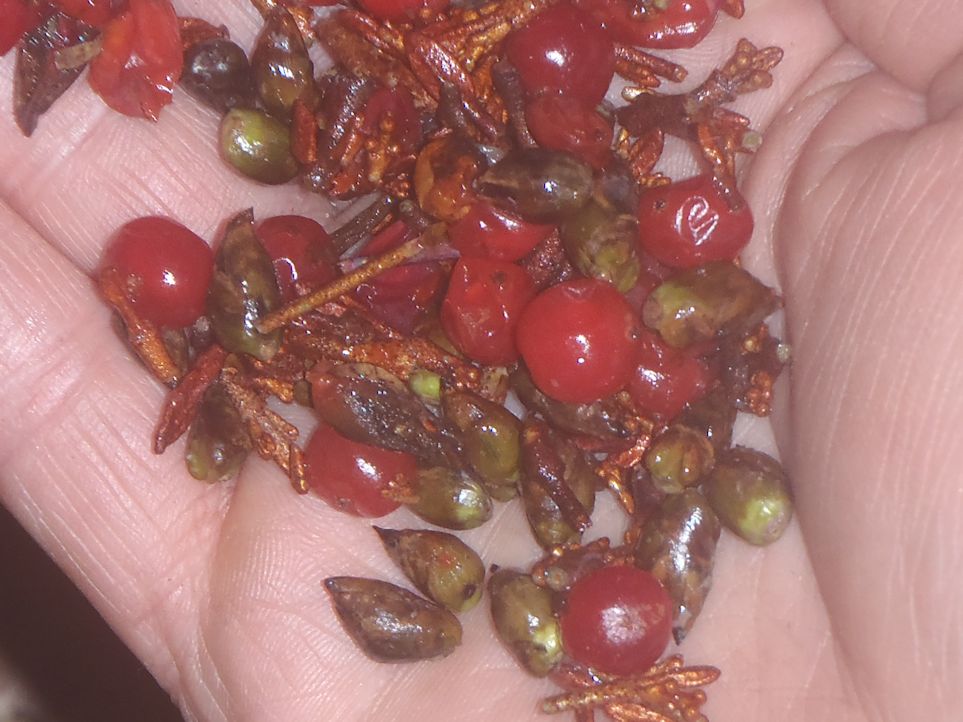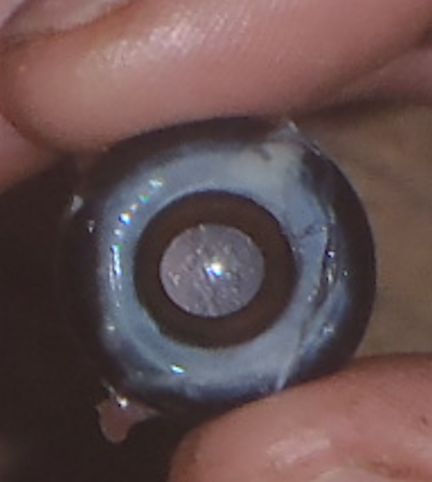Fodder update
 Sunday, July 6, 2014 at 1:56PM
Sunday, July 6, 2014 at 1:56PM Well, barley fodder has been a main component on our homestead for 8 months now. By the time November rolls around, I expect we will have grown 18 tons of sprouted barley fodder in our family room!
Chickens are happy, goats are happy, and now the little piggy is happy... and most of all, I am happy. Yeah, it takes routine work- every day will find me harvesting fodder and scrubbing trays and washing buckets and soaking grain and watering seeds. I still love it. It's a little messy- future plans include building moss mats below the trays to catch drips, but overall it's been a real bonus around here.
We have seen real gains against continually rising feed prices, allowing us to drop the price of our eggs when everyone else's prices are going up. And the condition of my goats is fantastic. They have done really, really well on barley fodder.
The piggy is new, he's only 25# and eating barley fodder and goat milk every day. No packaged food and no whole or ground grains and no slop. We'll see how long he takes to grow, but so far so good.
So I guess I'm calling an end to the fodder experiment and accepting that it is a beneficial facet to the way we run this homestead. Love it when things work out!
 [Lisa Rae] |
[Lisa Rae] |  3 Comments |
3 Comments | 




















